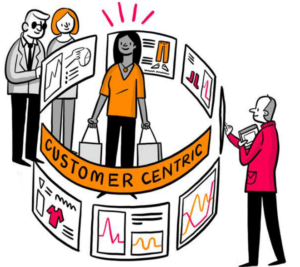We often talk about personalisation as the holy grail of customer experience. And yet, our latest Pulse report reveals a stark reality: only 10% of retailers believe their personalisation efforts are above average. Even more concerning, 43% rate themselves as below average. Why are so many struggling with something that’s supposed to be a cornerstone of modern retail?

The Data Dilemma
According to our findings, the number one barrier to effective personalisation isn’t budget, technology, or even privacy concerns. It’s the lack of relevant data – cited by 22% of retailers as their main obstacle. But this isn’t just about not having enough customer information. Many retailers are drowning in data but lacking the ability to make it clean, accessible, and actionable across departments.
Stuart Russell, Chief Strategy Officer at Plinc, puts it bluntly: “We see businesses rushing to invest in AI-driven personalisation without addressing the root problem – data quality and integration. AI can’t fix bad data. It’s like trying to build a high-speed train on broken tracks.”
The Integration Challenge
The second biggest challenge, flagged by 16% of our respondents, is integrating personalisation across platforms. Many retailers have siloed systems that prevent them from creating the seamless, omnichannel experiences customers now expect. For instance, while 35% of retailers are personalising email communications, only 10% are extending this to in-store experiences.
Sophia Khan from COS explains: “The challenge is plugging data from our CMS into tools that focus on product recommendations, ensuring the same experience in-store and on-site.” This disconnect between digital and physical experiences is leaving significant opportunities on the table.
What the Top 10% Are Doing Differently
The small group of retailers who’ve moved beyond basic personalisation share some common traits. They:
- Have Laid the Right Data Foundations: They’ve invested in creating a single customer view that updates in real-time, capturing every interaction and making this data easily accessible across channels.
- Think Beyond Discounts: Hotel Chocolat’s Martin Bell reveals how they’ve built solutions to “step away from needlessly discounting” by understanding customer intent—recognising when someone is shopping for a gift rather than themselves, for instance.
- Take an Agile Approach: Rather than trying to personalise everything at once, they test and learn using specific use cases. One entertainment business saw a 30% increase in channel engagement by tailoring cross-sell messages based on individual buying behaviour.

The AI Opportunity (But Beware)
Every retailer we surveyed identified AI as a key opportunity for improvement, but the experts warn against using it as a quick fix. Martin Bell notes, “AI is powerful, but only if it delivers measurable results. Every vendor promises a 20% ROI, but for us, it’s about verifying what the AI is doing—how it connects intent to outcomes and builds a clear view of customer behaviour.”
To properly leverage AI, retailers need to:
- Ensure data is clean, structured, and integrated
- Have clear goals and measurable outcomes
- Build internal expertise to understand and optimise AI-driven results

Quick Wins for Better Personalisation
While achieving advanced personalisation takes time, our research identified several areas where retailers can make rapid progress:
- Start with Email: It’s seen as the most effective channel by our members, generating up to 20% increases in incremental revenue through better targeting.
- Leverage Social Media: Despite only 20% of retailers currently personalising social media, it’s ranked as the second most effective channel for those who do.
- Focus on Early Customer Engagement: One online retailer increased repeat purchases by 40% with a personalised welcome programme driven by machine learning.
The Way Forward
As Claire Russell from Bugaboo points out, “People have such different preferences. Some love tailored experiences, but others really don’t want to share their data. The trick is finding that middle ground—helping them see the benefits while building trust.”
Looking ahead, our survey shows that retailers are prioritising:
- Enhanced data collection and analysis (23%)
- Investment in new personalisation technologies (22%)
- Expansion across more channels (18%)
The retailers who succeed won’t be those who simply invest in the latest AI tools, but those who build strong foundations first: clean data, integrated systems, skilled teams, and clear strategies.

